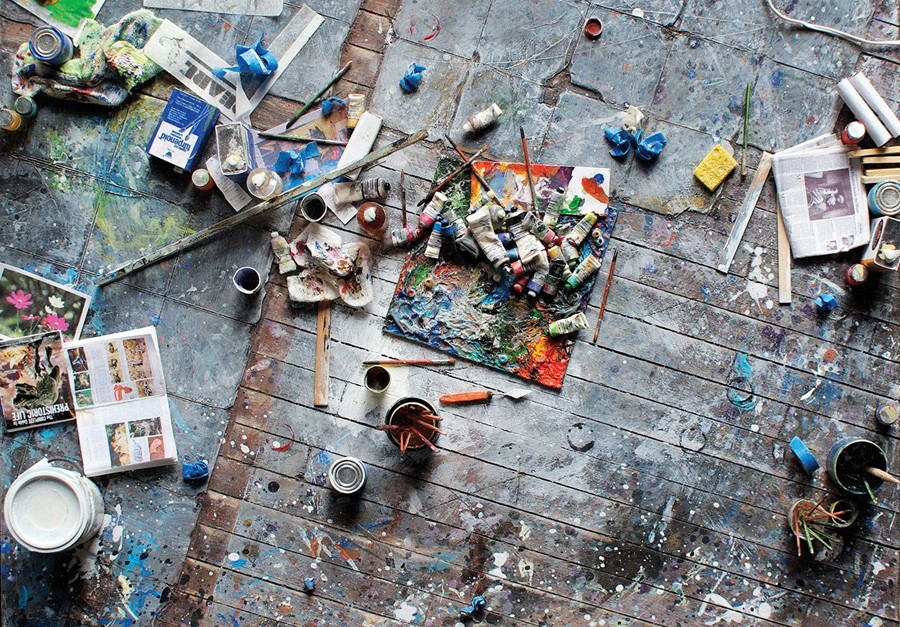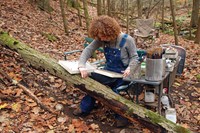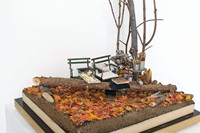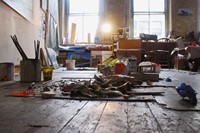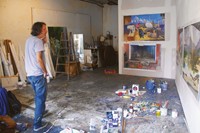Artist Joe Fig likes to work small. Very small. In celebration of his new book, AnOther zooms in on his tiny replica models of artists' studios
Artist Joe Fig's scale replica of Jackson Pollock's famous studio, created a number of years ago, is a thing of wonder. All of the recognised elements are there; an assortment of hundreds of paint tins, brushes sitting strewn carelessly inside them; the floor, stained with the remants of hundreds of drip paintings made in a myriad of colours; the artist himself, poised thoughtfully over a work-in-progress. The key differentiating factor? This tiny facsimile is just inches long.
Fast forward a few years, and Fig has forged a career in creating miniatures of artists' workspaces in this way. They have evolved into a form of portraiture, he explains, and allow him to step into the shoes of his subjects. "Working at this miniature scale gave me the opportunity to explore the entire studio, duplicating the artists' work at the same time," he explains. "That really helps to give insight to the space, and how the artist moves around it.”
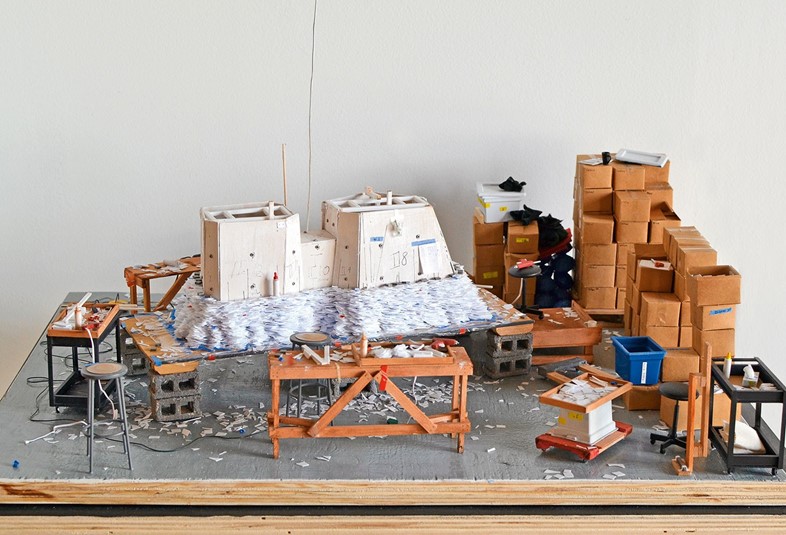
Fig's new book, Inside the Artist's Studio, sees him visit the workspace of 24 contemporary artists, including the likes of Laurie Simmons and Tom Friedman. Once there, he conducts an interview and takes a a number of photographs which eventually become the source material for either the miniature model or the painting which ensues. But his interest in miniatures came about in a surprising way, he explains. “I’d been a painter for ten years, and I was making large-scale figures for sensational paintings, and I found that my interest in that kind of painting literally came to an end,” he explains. Soon afterwards he visited a retrospective exhibition of work by Alice Neel at the Whitney Museum, and decided to make a tiny figure of her inside a snow globe. “I thought it was so funny, and I liked working at that scale,” so he quickly moved on to creating artists’ studios.
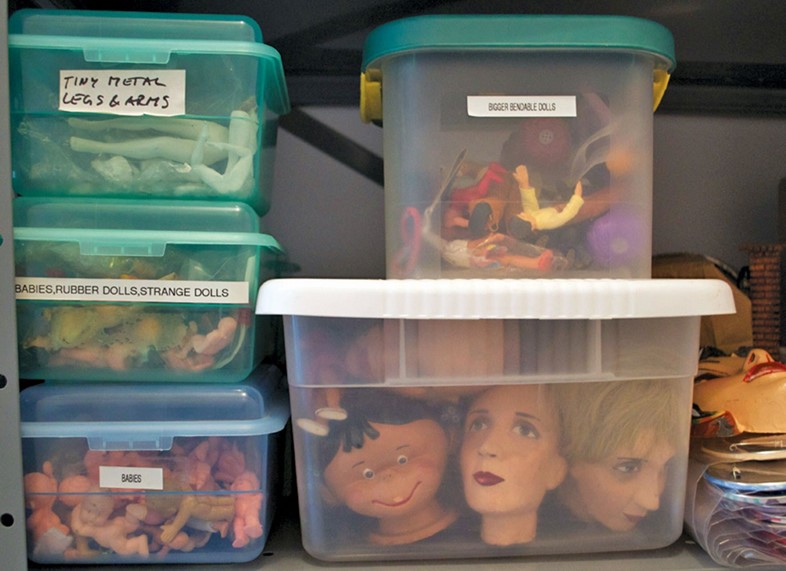
Fig's research process is intensive. “I go to the artist’s studio and conduct the interview,” he explains, “and then usually I look around and talk about the space, and try to get an understanding of how they are choreographing their mood. Then I’ll start measuring everything.” The measuring is a key part of the process – each of Fig’s miniatures is made to scale, and almost entirely by hand, from discarded rags to bags of clay and metal lamps. “All of the materials and the paint tubes on the artists’ tables are made out of polymer clay. All the paintbrushes are handmade. For the labels, I’ll photograph the labels of paint cans or jars that belong to the artist, and I’ll scale them down and print them out.” It’s an incredibly meticulous process, even an obsessive one, but this adds to the beauty of it. It also allows Fig to practise other artists’ work vicariously through his pieces. “It was kind of a fun way to get into other people’s artwork, and I mean to me it is still,” he explains. I guess since I’m not really an abstract artist. Even though if the scale is different, the projects end up being the same.”
Inside the Artist's Studio by Joe Fig is out now, published by Princeton Architectural Press.
